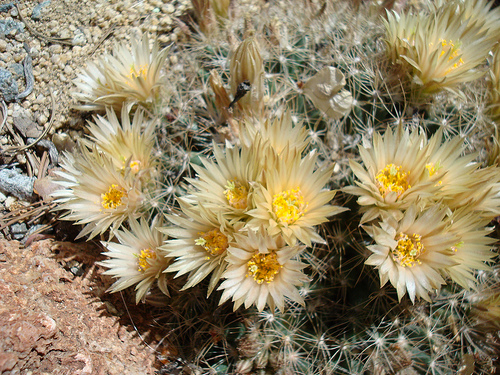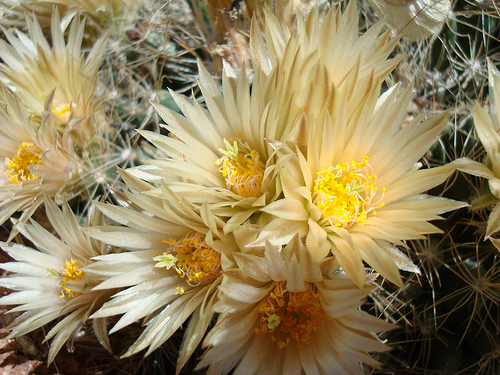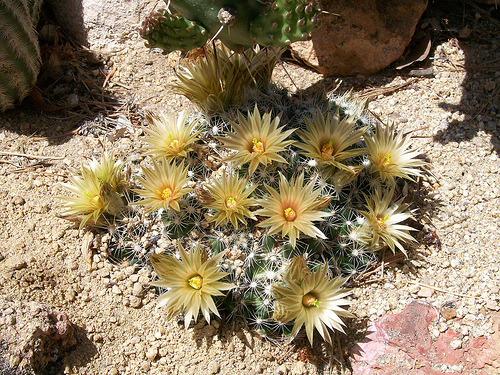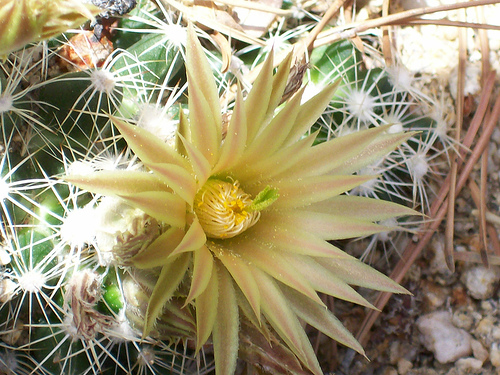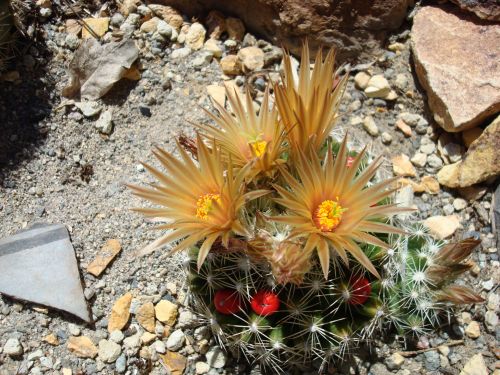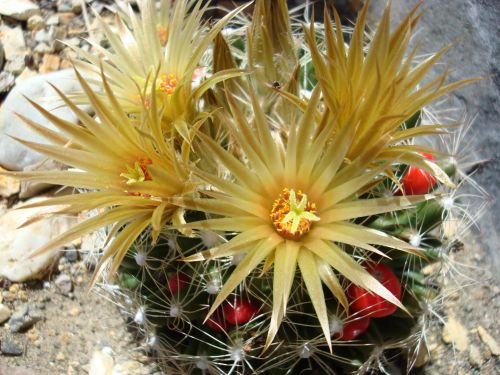I have grown Escobaria missouriensis for many years. I started in North Dakota as this is one of those bone-hardy cactus from the Northern Great Plains.
The form found in that part of the country grows very low to the ground (almost flat)tucked in amongst the short bunch grasses, on the dry sloping flanks of clay buttes and gravely knolls. It is confined to the south western portion of the state in what, for a better term, is know as the "bad lands". The spines are thin and wiry with few to no central spines. (a user friendly cacti) It can take considerable moisture and and in most years is the second cacti to bloom for me.(only preceded by Pediocactus) Fertile seed are encased in small bright red, berry shaped fruits ,that can persist attached to the plant for up to two years. There is some variation in spine coloration from white though amber. Once in a while a black spined plant may be discovered. These northern forms bloom with the blossoms in clusters. The petals are always a pale straw color with an embossed button of yellow stamens.
I do have another clone from a nursery that shows some variation in growth, and flowering habit. This plant grows in a higher domed cluster of stems with single flowers scattered across the mat. The flower color is a little richer with more golden hues. All in all a nice clone.
A friend in Reno grows several clones from north central New Mexico that are highly domed and ball shaped . they do not cluster as readily and the plentiful fruits are two to three times larger. (they look like someone took the time to decorate for Christmas) The flowers are a bronze color fading to gold at the center(the look like they are radioactive with the glowing centers)and larger than the two forms described.
The first two are of the Northern Great Plains form.
The next two are the nursery form.
The last two of the New Mexico form.

